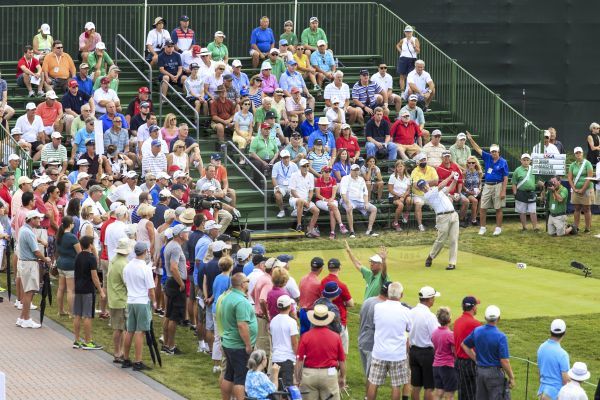
William Sheehan’s connection to the Salem Country Club goes back to the mid-1960s when, as a boy, he worked as a course caddy. Years later, Sheehan became a full member of the country club and was among those who experienced the 2001 U.S. Senior Open Championship, a success off the course as well as inside the ropes of the picturesque tree-lined fairways in Peabody.
Between June 26 and July 2, 2017, the Salem Country Club will host the 38th edition of the U.S. Senior Open as 156 of the world’s best golfers—age 50 and over—attempt to conquer the undulating greens that have made the course’s reputation throughout the golfing community.
“We are so fortunate to have the course we have,” Sheehan says. Sheehan is the chairman of the 2017 event; he and others predict spectator numbers greater than 100,000.
Tradition will again come into play when the four-day event, following three days of practice rounds, tees off Thursday, June 29, on Fox television, which plans to broadcast the competition to more than 100 countries.
“This is a golf-rich environment,” Sheehan says of Massachusetts and New England. “This is a tremendous opportunity to showcase our course. Our members take pride in it.” The event promises to make just as big of an economic impact on the North Shore, and, according to Sheehan and executive director Eddie Carbone, should bring between $20 million and $25 million to the area.
“We’re positioned well,” Carbone says of the country club, which sits between I-95 and Route 128. “If you are in Vermont, Worcester, Concord, New Hampshire, or southern Maine, we’re an easy drive. The allure is also our proximity.”
Volunteers from 17 country clubs throughout New England will also help run the tournament. Ticket packages are already being sold throughout the United States. “It is atypical of most events to sell a year in advance,” Carbone says.
In 2001, thousands came to see Arnold Palmer, Jack Nicklaus, and Gary Player, legends of the game. Nicklaus was among four players tied for the lead with four holes to play before Bruce Fleisher defeated Gil Morgan and Isao Aoki by one stroke.
The names may have changed for 2017, but not the quality of the golf, on the “PGA Tour Champions.” Spectators will have an opportunity to watch the likes of golfing champions Bernhard Langer, Colin Montgomerie, Davis Love III, Fred Couples, Tom Watson, and John Daly.
“People don’t realize how competitive, how good, the golf is week in and week out on tour,” says Matt Sawicki, director of USGA Championships. “The players are sensational. Until people go out and watch, they don’t realize how good they are.” Sawicki adds, “And the course is phenomenal.”
As always, the course takes center stage in a championship, and 2017 should be no different. Salem Country Club was first established in 1895 by a handful of Salem residents. In 1925, noted golf architect Donald Ross designed a new course on what used to be Sanders Farm in Peabody.
Ross, who came to America from Scotland, created in Peabody what is considered to be among the best of the around 400 courses he designed or redesigned between 1900 and 1948.
The 2017 event will be the sixth championship hosted by Salem Country Club, including the 1932 Women’s Amateur, the 1977 Men’s Senior Amateur, and the Women’s Open in 1954 and 1984.
The course, which will play at par 70 and around 6,800 yards for the 2017 championship, is not tremendously difficult from tee to green. The real challenge begins upon reaching the large, undulating greens.
“That’s when it gets tricky,” Salem Country Club’s course superintendent, Kip Tyler, says. “The pin placement is tricky. In 2001, the USGA opted for softer greens and tricky pin placements. To have both, you wouldn’t be able to putt for the cup.”
As tough as the greens were in 2001, they will be even more difficult in 2017. Starting in the 1940s, when World War II created a shortage of caretakers to watch over Ross’s creation, the greens slowly lost their size and shape, becoming more oval.
In 2015, Tyler, thanks to historic pictures and the discovery of Ross’ design notes, helped direct a restoration of the course to change the greens back to the way they were designed. The appearance and impact have been dramatic, and should play a role in the U.S. Senior Open. “We can return to our roots,” Carbone says. “This place has incredible history.”
And there’s more history just ready to be made in 2017.

